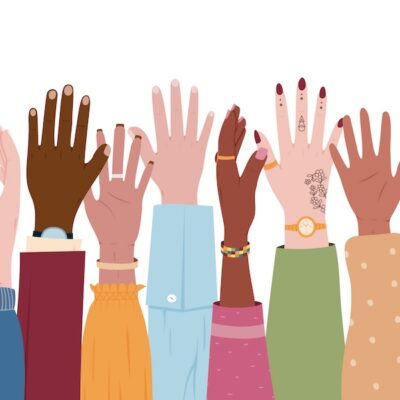Women with grey hair face workplace ageism
Age catches up to us all, but in the workplace, there remains a big difference in how men with grey hair are treated in comparison with women with grey hair, […]
Age catches up to us all, but in the workplace, there remains a big difference in how men with grey hair are treated in comparison with women with grey hair, says Kathryn Sandford.
Sandford, who is the CEO of New Zealand recruitment and career coaching company M2M, said as the modern workplace makes effort to be more inclusive and remove stigma, a lot of perceived barriers have been overcome. However, Sandford said an “unspoken” barrier that deserves more concentration is the imbalances about age between men and women.
In the workplace, there is an expectation for women to dye their hair when it begins to go grey, Sandford said. If a woman chooses not to dye their hair, this can impact perception of them as a leader, making a woman more vulnerable to “ageism.”
According to the World Health Organisation (WHO), ageism refers to the stereotypes, prejudice and discrimination towards others or oneself based on age. Sandford said ageism is still rife in the workplace, especially with women as targets.
For example, in January, a Scottish woman lost a $5 million employment dispute with her company over her complaints that she was given a nickname by colleagues of “Christine Lagarde” due to her grey hair. Lagarde is the president of the European Central Bank and has grey hair.
The 52-year-old Scottish woman took offence at the nickname and sued her company claiming she was a victim of “a culture of sexism and ageism” and bullying by colleagues before she was made redundant.
However, Judge Bernice Elgot dismissed the claim and said that being nicknamed Christine Lagarde was “part of the irritation of day-to-day office life which occasionally occurs.”
Sandford said while the Scottish legal case was likely correctly adjudicated, it did present a commonly felt bias that occurs in most workplaces.
“People don’t talk about things like age and grey hair. The senior leadership teams often rolls out plans for DEI (diversity, equity, and inclusion) mandates, but that’s often little more than platitudes.
“They are very good at ticking boxes and taking the public accolades that comes with such initiatives. Yet I am often sceptical that real buy-in to inclusion is there,” Sandford said.
She said the actor George Clooney is a good example of the perception differences of grey hair between men and women.
“If a man like Clooney chooses to go grey, there is an element of bucking the trend. He’s putting himself out there. He became more visible. There’s no judgement on a man going grey. In fact, Clooney is often called a ‘silver fox,’ because going grey on a man is a distinguished thing.
“But for women, the opposite happens. Rather than becoming more visible, they tend to become invisible. People will assume, or make comments, that a woman looks a lot older, which can be attached to negative connotations,” Sandford said.
“Dyeing grey hair is a choice that a woman can make, not a judgement of women who choose to do this. But if a woman chooses not to dye their grey hair, as with the story from Scotland, they risk getting negative and sometimes hurtful comments,” Sandford said.
Sandford offers some tips for dealing with ageism in the workplace.
1. Call it out.
As with any attempt at belittling or victimisation, Sandford said women at the sharp end of the ageism stick should immediately call out that behaviour and explain to the other person why it can be hurtful.
“The world needs women in places of responsibility, especially the workplace. So, it is important that women – and anyone else who witnesses ageism – stand in their power and confront it. Don’t tolerate it,” Sandford said.
2. Recognise boundaries
Office banter is one thing, but directly hurtful words can be quite another. To recognise the difference, a person has to know their own boundaries for what’s acceptable.
“Get better at recognising what you are prepared to put up with and what you are not. Stereotypes infiltrate into perceptions, and a culture of ageism can seriously impact a person’s chance for promotion. It’s important to be firm about one’s boundaries here,” Sandford said.
3. Enforce boundaries.
A bit like laws, boundaries without enforcement are worth less than the paper they are written on. If a workplace has a risk or even a tendency towards ageism, it is crucial to open a discussion with senior leadership about consequences for hurtful discussion before the situation arises.
“Set boundaries and have the confidence to deliver on those boundaries. This solves two problems immediately: the hurtful behaviour, and it proves that you are the kind of person who can be tough and follow the rules in moments of stress. That’s a good signal to project for career progression,” Sandford said.
Kathryn Sandford (pictured above) is director of M2M (Move To More). For more information visit: https://m2m.co.nz/






